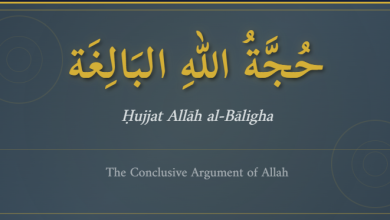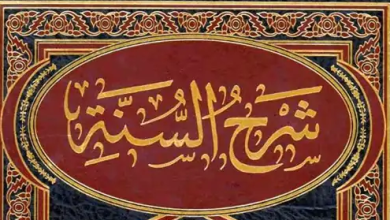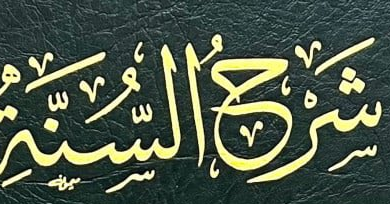On the Manuscripts of Ṣaḥīḥ al-Bukhārī: Discrepancies and Disappearance of the Original Copy
On the Manuscripts of Ṣaḥīḥ al-Bukhārī: Discrepancies and Disappearance of the Original Copy
By ʿAbd al-Qādir Jalāl
Translated by Muntasir Zaman
Translator’s Preface
Orientalist studies on Ḥadīth were part of a broader investigation into Islamic history. Their criticism on the reliability of Ḥadīth started as early as the nineteenth century; by 1848, Gustav Weil (d. 1889) had already criticized a substantial number of ḥadīths. The Hungarian Ignaz Goldziher (d. 1921) was the first to write a fundamental study on Ḥadīth, and his teachings deeply influenced subsequent critics, notable among whom was Joseph Schacht (d. 1969).[1] Their contentions quickly found their way into the Muslim world, due in part to the writings of Aḥmad Amīn (d. 1954) and Maḥmūd Abū Rayyah (d. 1970), who did little more than reproduce outdated clichés.[2] It was not long before Muslim scholars responded. One of the most vigorous rebuttals to Schacht’s ideas was by the late Muṣṭafa al-Aʿẓamī (d. 2018), who authored Studies in Early Ḥadīth Literature and On Schacht’s Origins of Muhammadan Jurisprudence. Muṣṭafā al-Sibāʿī (d. 1964) authored his masterpiece al-Sunnah wa Makānatuhā fī al-Tashrīʿ al-Islāmī to address similar criticisms by Maḥmūd Abū Rayyah. Others dedicated works to address specific topics, such as a vindication of Abū Hurayrah by ʿAjjāj al-Khaṭīb and ʿAbd al-Munʿim al-ʿIzzī, respectively.[3]
In his timely contribution to this exchange entitled “Iʿlāʾ al-Bukhārī,” Shaykh ʿAbd al-Qādir Jalāl offers a robust rejoinder to modern criticisms on Ṣāḥīḥ al-Bukhārī. The roughly 200-page monograph, edited by Shaykh ʿAlī al-ʿImrān, comprises five chapters, tackling a range of topics related to the Ṣaḥīḥ from a defense of Imām al-Bukhārī to explicating ostensibly problematic ḥadīths to clarifying doubts surrounding the credibility of the Ṣaḥīḥ’s narrators. Iʿlāʿ al-Bukhārī, which can be downloaded here, is a valuable resource for those who seek clarity on the reliability and status of Ṣaḥīḥ al-Bukhārī.
The following is an excerpt from the second chapter where the author examines three contentions surrounding the authorship of Ṣaḥīḥ al-Bukhārī and its recensions: (i) Imām al-Bukhārī passed away before producing a fair copy of the Saḥīḥ; (ii) the disappearance of the original manuscript penned by al-Bukhārī; and (iii) the multiplicity of recensions with discrepancies and additional material within them.[4] On the preservation of Ḥadīth literature in general, the reader may consult our previous article. To make this article more reader-friendly, a paraphrased translation was adopted in several places. A diagram summarizing the present article and a brief biographical entry on al-Firabrī have been appended for the benefit of the reader.
The Final Draft
Contention I: Imām al-Bukhārī passed away before producing a final draft of the Ṣaḥīḥ. The first question that needs to be addressed here is whether al-Bukhārī left the Ṣaḥīḥ as a rough draft. Based on a statement attributed to Abū Isḥāq al-Mustamlī (d. 376 AH) and its explanation by Abū al-Walīd al-Bājī (d. 474 AH), some have argued that al-Bukhārī never completed a final draft of the Ṣaḥīḥ, a task that subsequent transmitters took upon themselves to complete. Abū Isḥāq al-Mustamlī states, “I copied al-Bukhārī’s book from its original manuscript that was in al-Firabrī’s possession. I noticed that the book was incomplete. Many places were left blank: certain chapter headings were void of content while certain ḥadīths lacked chapter headings, so we merged them together.”[5] Abū al-Walīd al-Bājī comments:
The correctness of this remark is evidenced by the fact that the recensions of Abū Isḥāq al-Mustamlī, Abū Muḥammad al-Sarakhsī, Abū al-Haytham al-Kushmīhanī, and Abū Zayd al-Marwazī differ in their arrangement even though they copied from the same source. Each transmitter assigned the material they found in the margins and addended papyri to the relevant places in the core text based on their discretion. This is supported by the fact that you will find two or more chapter headings presented in succession without any ḥadīths in them. I only mention this in view of my fellow townsmen’s desire to harmonize the ḥadīths in a given chapter with the chapter heading, but their far-fetched attempts at harmonization are unacceptable. Although Muḥammad ibn Ismāʿīl al-Bukhārī was the most knowledgeable scholar with regards to authentic and inauthentic ḥadīths, it does not follow by necessity that he was qualified in the rhetorical science of meaning (ʿilm al-maʿānī) and phraseology.[6]
Here, al-Bājī explains that the Ṣaḥīḥ contains chapter headings void of material and ḥadīths for which al-Bukhārī was not content with placing chapter headings, so he simply collated them in untitled sections. Some scribes erred by placing the untitled ḥadīths under the empty chapter headings, thereby altering the areas al-Bukhārī intentionally left blank. This contention can be answered in multiple ways.
First, that al-Bukhārī clearly states, “I revised all of my books three times”[7] demonstrates his caution, precision, and aspiration to complete his works. He revised each of his books, refining them until they took a form most pleasing to him. It is, therefore, evident that he released the Ṣaḥīḥ for public consumption only after adequate compilation, refinement, and arrangement. Furthermore, al-Bukhārī spent 16 years working on the Ṣaḥīḥ.[8] Dedicating such an extensive amount of time is indicative of his attention to detail and precision in authoring the Ṣaḥīḥ.
Second, al-Bukhārī taught the Ṣaḥīḥ several times in multiple cities. He could not have taught the book unless it was organized and chaptered; he could not have left the matter to the discretion of the scribes.[9] Al-Qasṭallānī (d. 923 AH) writes, “Al-Bājī’s comments are problematized by the fact that the Ṣaḥīḥ was studied under its author, and it could have only been read if it were organized and chaptered. Consideration is, therefore, given to oral transmission, not the draft al-Bājī detailed.[10]
Third, when al-Bukhārī left Nishapur for Bukhara, Khālid ibn Aḥmad al-Dhuhlī, the emir of Bukhara, requested al-Bukhārī, “Bring me the Jāmiʿ, Tārīkh, and other books, so that I may hear them from you.” Al-Bukhārī replied, “I will not humiliate knowledge by taking it to the doors of people. If you are interested, come to my house or the local Masjid. If this does not please you, then you may prevent me from holding a study circle—you are the sultan, after all—so that I have an excuse in the court of Allah because I will not horde knowledge.”[11] That the emir of Bukhara requested al-Bukhārī to teach him the Ṣaḥīḥ proves that he had already completed the book such that its affair was common knowledge even among the ruling class.
Fourth, al-Bukhārī’s ingenuity in preparing the Ṣaḥīḥ’s chapter headings demonstrates clarity of thought, brilliance, deductive skills, and ability to extrapolate and allude to issues incorporated in a given ḥadīth. In light of this, no scholar ever mentioned that the transmitters of the Ṣaḥīḥ were responsible for its arrangement. Otherwise, they would not have concurred upon a predominantly identical structure, and there would have been severe disagreements in copying the book.[12]
It is clear from the foregoing that al-Bukhārī completed and refined the Ṣaḥīḥ, leaving no stone unturned in attending to it. Ibn Ḥajar (d. 852 AH) writes, “A failure to grasp these nuances has led superficial readers to believe that al-Bukhārī never completed the Ṣaḥīḥ.”[13]
The second question that arises is whether this casts doubt on the Ṣaḥīḥ, the authenticity of its ḥadīths, and al-Bukhārī’s knowledge of hidden defects and his critical rigor? The answer is an emphatic no. These contentious areas do not pertain to ḥadīths, ʿilal, or narrator criticism; instead, they relate to chapter headings and ḥadīth arrangement. These issues do not decrease the academic value of the Ṣaḥīḥ.[14] Moreover, these contentious areas are extremely few. After citing al-Bājī’s comments, Ibn Ḥajar writes, “This is a suitable justification that can be provided when harmonizing a chapter heading with its ḥadīths proves difficult, which are, in any case, very few in number.”[15]
The Original Manuscript
Contention II: we do not have the original manuscript penned by al-Bukhārī. The first question here concerns whether there was a manuscript of the Ṣaḥīḥ penned by al-Bukhārī. There is no doubt that al-Bukhārī penned a personal manuscript of the Ṣaḥīḥ. This is supported by the following.
Al-Bukhārī’s statement “I revised all my books three times” demands that he had a personal written copy of the Ṣaḥīḥ. Ibn ʿAdī (d. 365 AH) relates from many of his teachers that al-Bukhārī transferred (ḥawwal) the chapter headings of the Ṣaḥīḥ between the Prophet’s grave and his pulpit, and he prayed two units of prayer for every chapter heading.[16] Ibn Ḥajar explains this statement as al-Bukhārī’s editing the draft to prepare a fair copy.[17] Moreover, many scholars, such as al-Mustamlī, Qāḍī ʿIyāḍ (d. 544 AH),[18] and Ibn Rushayd (d. 721 AH),[19] have explained that al-Firabrī (d. 320 AH) had access to al-Bukhārī’s personal copy of the Ṣaḥīḥ. Ibn Ḥajar writes:
Al-Firabrī possessed al-Bukhārī’s personal copy, which contained additions and addended papyri. Some scribes assigned these additions to relevant places in the core text based on their discretion. As a result, variations arose between the three Shaykhs from whom Abū Dharr studied; they narrated the book to him collectively from al-Firabrī.”[20]
Despite the preponderance of the Ṣaḥīḥ’s recensions and manuscripts, its core content and arrangement remain undisputed save a handful of passages (e.g. the arrangement of certain ḥadīths) that do not affect the academic value of the book.
The second question that arises is whether the disappearance of al-Bukhārī’s written copy affects the reliability of the Ṣaḥīḥ? The answer is an emphatic no. The availability of author-written manuscripts is extremely rare for books of the early period, a phenomenon not exclusive to the Ṣaḥīḥ. Scholars who have critically engaged some of the Ṣaḥīḥ’s ḥadīths never considered the absence of the original manuscript a worthy point of contention. Furthermore, the ḥadīths of the Ṣaḥīḥ have been corroborated by other scholars in their respective collections.
It is worth noting that according to Ḥadīth scholars, oral/aural transmission is the most authoritative method of establishing ḥadīths. Theirs was an era of transmission, audition, academic travels, attending dictation sessions, and focus on chains of transmission. As mentioned earlier, this was al-Qasṭallānī’s response to al-Bājī’s comments. Transmitters and Ḥadīth scholars were, therefore, not as concerned with the original manuscript. Given his acquaintance with al-Bukhārī, frequent study of the Ṣaḥīḥ under him—he studied it multiple times,[21] and access to the original manuscript, al-Firabrī’s recension of the Ṣaḥīḥ was on par with the original.
Multiplicity, Discrepancies, and Additions
Contention III: There are multiple recensions of the Ṣaḥīḥ with discrepancies and additions in them. Al-Bukhārī’s academic standing drew thousands to his study circle to learn the Ṣaḥīḥ, among whom al-Firabrī gained prominence. The Ṣaḥīḥ, as al-Nawawī (d. 676 AH) explains, was widely transmitted from al-Bukhārī, but al-Firabrī’s recension became well known.[22] Since al-Firabrī studied the Ṣaḥīḥ from its author at a young age and he was bestowed with a long life, he managed to impart the Ṣaḥīḥ to countless students hailing from distant lands. As customary with prominent books, the preponderance of transmitters is a natural cause for variation in recensions and manuscripts regardless of the caution scribes exercise.
A close study of the variations between the recensions of the Ṣaḥīḥ reveals that they fall under one of the following: (i) general variations; (ii) isnād-based; and (iii) text-based.[23]
- General variations include arrangement and titles of chapters or additions and sequence of ḥadīths.
- Isnād-based variations include the following: the presence of a complete chain of transmission in one recension to the exclusion of others; additional information pertaining to al-Bukhārī’s informants; phrases of transmission; the addition or omission of a narrator that may lead to an ʿillah or addition of a reliable narrator.
- Text-based variations include the following: mention of the entire ḥadīth or a few sentences that results in its abbreviation or completion of the remainder; the addition or omission of a word; addition of a word or letter and vowelization; honorifics in praise of Allah, salutations upon the Prophet (peace and blessings be upon him) and previous messengers, and prayers upon the Companions and Successors; and truncating or completing Qurʿānic verses mentioned in the ḥadīths.
Fortunately, these variations are not serious. They do not affect the rank of the Ṣaḥīḥ, cast doubt on the authenticity of its ḥadīths, or devalue the status of its author. Rather, as any specialist will tell you, it is absolutely normal for such variations to occur. They are a living portrayal of the precision and academic honesty that distinguishes the works of the Ḥadīth scholars, their concern for the science of transmission, continuous refinement of what they received from their teachers, and consultation with primary sources to arrive at the most accurate version of the original.[24]
Scholars have categorized the aforementioned variations into different categories. Some are mistakes and oversights, predominantly from later transmitters, not from al-Bukhārī himself, as explained by experts in the field. Others pertain to the arrangement and titles of chapters and sequence of ḥadīths, which were also from the discretion of later transmitters who copied the book from multiple manuscripts. However, a comparative analysis of the variations can aid a researcher in determining the most accurate version. Ibn Ḥajar writes:
Al-Bukhārī’s statement, “The verse: Neither commerce nor sale distracts them from the remembrance of Allah. Qatādah states, ‘People would engage in business…’” is repeated in its entirety in al-Mustamlī’s recension and omitted elsewhere except by al-Nasafī who mentions it here but omits it earlier; it is also repeated in al-Saghānī’s copy. This supports the earlier quote from Abū Dharr that al-Firabrī possessed al-Bukhārī’s original, which contained additions in the margins. Scribes later placed these additions in the relevant places in the core text according to their discretion, which resulted in varying arrangements. In addition, out of caution, some scribes wrote the addition in both places, which resulted in repetition.[25]
Although relatively common, isnād-based variations do not have any serious implications save a handful of situations, which have been harmonized by scholarly commentary.[26] These variations, in fact, aid the researcher in clarifying isnād-related obscurities, such as continuity of a broken chain, discontinuity of an unbroken chain, clarifying that the mudallis heard from his informant, removal of inconsistencies in the chain, and information about unnamed transmitters, particularly al-Bukhārī’s teachers.[27] Ibn Ḥajar paid close attention to the various recensions because each recension could potentially clarify ambiguities found in the others, a feat that distinguishes his commentary on the Ṣaḥīḥ.[28]
Likewise, variations found in the text, for the most part, do not result in any serious alteration of the ḥadīth’s overall message, because ostensibly problematic ones can be harmonized and certain permutations can be preferred over others.[29] Honorifics of praise, salutations, and prayers are predominantly from the pen of the scribe. For instance, scholars expressly mention that scribes often add the phrases ʿalyhī al-salām and karram Allah wajhahu next to the name of ʿAlī (Allah be pleased with him).[30] Finally, there are a few additions to the Ṣaḥīḥ from al-Firabrī himself, but these are well-known, alluded to by commentators and transmitters of the Ṣaḥīḥ.[31]
(Jalāl, Iʿlāʾ al-Bukhārī, pp. 51-71)
Appendix I: Diagram on the Preceding Discussion

Appendix II: Biography of al-Firabrī
Abū ʿAbd Allāh Muḥammad ibn Yūsuf al-Firabrī was born in Firabr[32]—a town that lay a parasang north of the Oxus on the road to Bukhara—[33]in the year 231 AH. Celebrated as one of al-Bukhārī’s last surviving students,[34] he played a pivotal role in the transmission of the Ṣaḥīḥ. Countless experts in the field of Ḥadīth have narrated ḥadīths via al-Firabrī directly (e.g. Ibn al-Sakan[35] and Ibn ʿAdī[36]) and indirectly (e.g. al-Khaṭṭābī,[37] and al-Bayhaqī[38]). After spending a relatively lengthy life, al-Firabrī breathed his last in Shawwāl, 320 AH (Allah have mercy on his soul).[39]
Scholars have explicitly and implicitly[40] vouched for his credibility. Abū al-Walīd al-Bājī (d. 474 AH) states that al-Firabrī was “reliable, prominent” [41] and Abū Bakr al-Samʿānī (d. 520 AH) adds that he was “scrupulous.”[42] That a host of students and scholars alike have flocked from distant lands to narrate the Ṣaḥīḥ from al-Firabrī speaks volumes about his status as a transmitter. It is no wonder that he was, as al-Rushāṭī (d. 547 AH) explains, the main reference in transmitting the Ṣaḥīḥ.[43] There are multiple recensions of Ṣaḥīḥ al-Bukhārī besides al-Firabrī’s, including that of Ibrāhīm ibn Maʿqil (d. 295 AH) and Ḥammād ibn Shākir (d. 311 AH).[44] Al-Firabrī’s rise to prominence vis-à-vis the Ṣaḥīḥ in comparison to his fellow transmitters can be credited, in part, to his frequent studies under al-Bukhārī, access to the original manuscript, his recension being the most complete, and a long lifespan.[45]
Given the preponderance of evidence to suggest his credibility, to argue that he was unreliable would require cogent proof to the contrary. Concluding his biographical entry on al-Firabrī, Ibn Rushayd states that those who ask about his credibility, should be given Yaḥyā ibn Maʿīn’s reply to a person who asked about the credibility of some leading Ḥadīth scholars, “Hey lunatic, have you seen anyone ask about the likes of these people?”[46]
[1] See Brown, Hadith: Muhammad’s Legacy in the Medival and Modern World, p. 204; Hallaq, The Authenticity of Prophetic Ḥadīth: a Pseudo-problem, p. 1; Motzki, The Origins of Islamic Jurisprudence, p. 8; idem, Dating Muslim Traditions, p. 206.
[2] Al-Sibāʿī, al-Sunnah wa Makānatuhā fī al-Tashrīʿ al-Islāmī, p. 322.
[3] For a list of Arabic books written on this subject, see al-Aḥdab, al-Taṣnīf fī al-Sunnah al-Nabawiyyah, pp. 14-26.
[4] Jalāl, Iʿlāʾ al-Bukhārī, pp. 51-71.
[5] Al-Bājī, al-Taʿdīl wa al-Tarjīḥ, vol. 1, p. 311.
[6] Ibid. See Ibn Rushayd’s and Aḥmad al-Salūm’s respective rejoinders to al-Bājī in Ibn Rushayd, Ifādat al-Naṣīḥ, pp. 26-27 and al-Salūm, Introduction to al-Mukhtaṣar al-Naṣīḥ, vol. 1, pp. 97-103.
[7] Al-Dhahabī, Siyar Aʿlām al-Nubalāʾ, vol. 12, p. 403.
[8] Al-Baghdādī, al-Jāmiʿ li Akhlāq al-Rāwī wa Ādāb al-Sāmiʿ, vol. 2, p. 185.
[9] ʿAbd al-Sattār, al-Imām al-Bukhārī, p. 375.
[10] Al-Qasṭallānī, Irshād al-Sārī, vol. 1, p. 24.
[11] Al-Baghdādī, Tārīkh Baghdād, vol. 2, pp. 355-56.
[12] ʿAbd al-Sattār, al-Imām al-Bukhārī, pp. 260, 375-76.
[13] Ibn Ḥajar, Hudā al-Sārī, p. 14.
[14] Al-Muʿallimī, al-Anwār al-Kāshifah, p. 355.
[15] Ibn Ḥajar, Hudā al-Sārī, p. 8.ajar
[16] Ibn ʿAdī, Asāmī, p. 51.
[17] Ibn Ḥajar, Hudā al-Sārī, p. 489.
[18] ʿIyāḍ, Mashāriq al-Anwār, vol. 2, pp. 338-39.
[19] Ibn Rushayd, Ifādat al-Naṣīḥ, p. 18.
[20] Ibn Ḥajar, Intiqāḍ al-Iʿtirāḍ, vol. 2, p. 368.
[21] Al-Firabrī studied the Ṣaḥīḥ under al-Bukhārī for the first time in Firabr in 248 AH, the second time in Bukhara in 252 AH, and the third time again in Firabr from 253 AH to 255 AH. See al-Aḥdab, al-Imām al-Bukhārī wa Jāmiʿuhu al-Ṣaḥīḥ, pp. 226-227.
[22] Al-Nawawī, al-Talkhīṣ, p. 190.
[23] Jumuʿah, Riwāyāt al-Jāmiʿ al-Ṣaḥīḥ, vol. 1, pp.424-29.
[24] Muḥammad ibn ʿAbd al-Karīm, Riwāyāt wa Nusakh al-Jāmiʿ al-Ṣaḥīḥ, p. 16.
[25] Ibn Ḥajar, Fatḥ al-Bārī, vol. 4, p. 300.
[26] Jumuʿah, Riwāyāt, vol. 1, p. 428.
[27] Ibid., vol. 2, pp. 574, 600.
[28] Al-Sakhāwī, Fatḥ al-Mughīth, vol. 3, p. 106.
[29] Ibn Ḥajar, Hudā al-Sārī, p. 348.
[30] Ibn Kathīr, Tafsīr al-Qurʾān al-ʿAẓīm, vol. 6, pp. 478-79.
[31] Jumuʿah, Riwāyāt, vol. 1, p. 186.
[32] Historians debated the vowelization of Firabr. Some pronounced it as Farabr while others maintained that it was Firabr. See Ibn Rushayd, Ifādat al-Naṣīḥ, pp. 11-14.
[33] Spuler, “Firabr” in The Encyclopedia of Islam, Second Edition.
[34] Al-Dhahabī does not accept the authenticity of al-Firabrī’s statement, “90,000 people heard the Ṣaḥīḥ of Muḥammad ibn Ismāʿīl, and no one besides me remains who transmits it from him.” See al-Dhahabī, Siyar, vol. 15, p. 12. Shaykh ʿAwwāmah, however, argues that his critique is unwarranted. See ʿAwwāmah, Annotation on Tadrīb al-Rāwī, vol. 2, pp. 365-66.
[35] Al-Dhahabī, Tārīkh al-Islām, vol. 7, p. 375.
[36] See, for instance, Ibn ʿAdī, al-Kāmil, vol. 1, p. 123. In fact, Ibn ʿAdī was an important transmitter of the Ṣaḥīḥ via al-Firabrī in Jurjān. See Brown, The Canonization of al-Bukhārī and Muslim, p. 129.
[37] Al-Khaṭṭābī, Aʿlām al-Ḥadīth, vol. 1, p. 106.
[38] See, for instance, al-Bayhaqī, al-Sunan al-Kubrā, vol. 5, p. 93, no. 9110; idem, Shuʿab al-Īmān, vol. 4, p. 421, no. 2750.
[39] Al-Dhahabī, Siyar Aʿlām al-Nubalāʿ, vol. 15, pp. 10-13.
[40] On the concept of implicit accreditation (al-tawthīq al-ḍimnī), see ʿAwwāmah, Dirāsāt al-Kāshif, pp. 39-43.
[41] Ibn Rushayd, Ifādat al-Naṣīḥ, p. 15.
[42] Ibn Nuqṭah, al-Taqyīd, p. 126.
[43] Ibn Rushayd, Ifādat al-Naṣīḥ, pp. 15, 16.
[44] Ibrāhīm ibn Maʿqil’s recension is preserved in Abū Sulaymān al-Khattābī’s (d. 388 AH) Aʿlām al-Ḥadīth, one of the earliest commentaries on Ṣaḥīḥ al-Bukhārī, as the author himself explains in the introduction. While commentating, however, al-Khaṭṭābī generally does not cite the ḥadīths in their entirety. For a handful of narrations of the Ṣaḥīḥ via the recension of Ibrāhim ibn Maʿqil and Ḥammād ibn Shākir found in secondary sources, see Jumuʿah, Riwāyāt al-Jāmiʿ al-Ṣaḥīḥ wa Nusakhuhū, pp. 145-56, 164-69. The disparity in the number of ḥadīṭhs each recension contains stems from the amount each transmitter was able to study under al-Bukhārī. It does not stem from a disagreement on the actual number of ḥadīths in the Ṣaḥīḥ. See Ibn Ḥajar, al-Nukat, vol. 1, p. 294.
[45] See Sāmiḥ Mutawallī, Ziyādāt al-Imām Muḥammad ibn Yūsuf ibn Maṭar al-Firabrī ʿalā Ṣaḥīḥ al-Bukhārī, pp. 24-29.
[46] Ibn Rushayd, Ifādat al-Naṣīḥ, pp. 15-16.
For the reliability of Imam al-Firabri please see the following article:
Why Imam al-Firabri: The student of Imam al-Bukhari and transmitter of his Sahih was trustworthy (thiqa)






